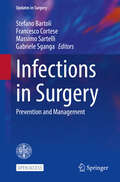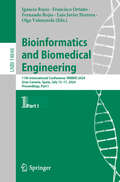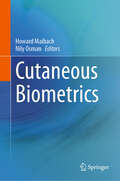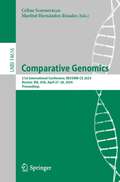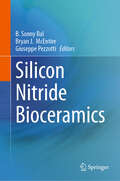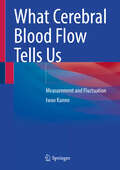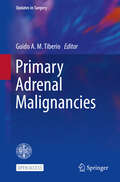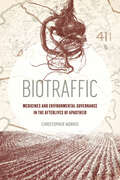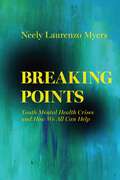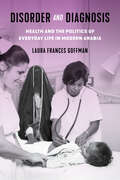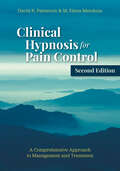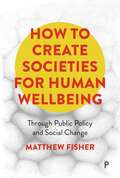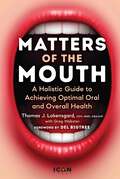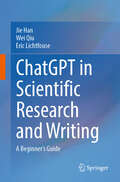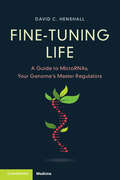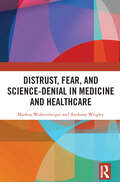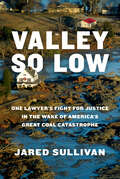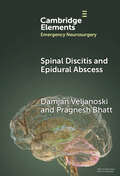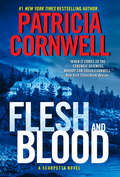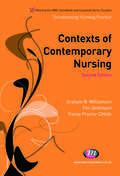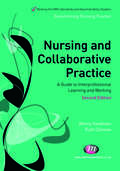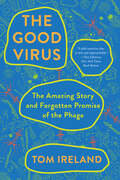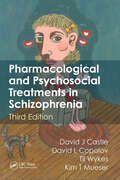- Table View
- List View
Infections in Surgery: Prevention and Management (Updates in Surgery)
by Massimo Sartelli Stefano Bartoli Francesco Cortese Gabriele SgangaInfections in surgery, commonly known as surgical site infections (SSIs), are complications that may occur after a surgical procedure. SSIs represent a serious problem leading to increased morbidity, mortality, and healthcare costs, highlighting the need for continued efforts to improve surgical practices and reduce their incidence. Several factors can contribute to the development of SSIs: patient-related factors (such as obesity, advanced age, diabetes, immunosuppression, pre-existing infections etc.); preoperative preparation-related factors (such as incomplete skin antisepsis or failure to administer appropriate antibiotic prophylaxis); microbial contamination (despite sterile techniques, microorganisms can infect the surgical site); surgical procedure-related factors (duration and complexity of the surgeries); postoperative care-related factors (such as inadequate wound care or infection control measures). To prevent SSIs, healthcare facilities implement various strategies, including: optimization of patients’ conditions before surgery; preoperative antibiotic prophylaxis; strict sterile technique; postoperative wound care; surveillance and monitoring to identify and address SSIs early, preventing their spread and complications. Despite the evidence supporting the effectiveness of best practices, many clinicians fail to implement them, and evidence-based practices that optimize both the prevention and treatment of SSIs tend to be underused, highlighting the importance of ongoing research and improvement in surgical techniques and infection control practices. This open access book provides a practical toolkit for surgeons and intensivists to improve their daily clinical practices in order to reduce the risk of SSIs.
Bioinformatics and Biomedical Engineering: 11th International Conference, IWBBIO 2024, Meloneras, Gran Canaria, Spain, July 15–17, 2024, Proceedings, Part I (Lecture Notes in Computer Science #14848)
by Ignacio Rojas Francisco Ortuño Olga Valenzuela Fernando Rojas Luis Javier HerreraThis volume constitutes the proceedings of the 11th International Work-Conference on IWBBIO 2023, held in Gran Canaria, Spain, during July 15-17, 2022. The 54 full papers were carefully reviewed and selected from 148 submissions. They were organized in the following topical sections: Biomarker Identification, Biomedical Engineering, Biomedical Signal Analysis, E-Health.
Cutaneous Biometrics
by Howard Maibach Nily OsmanThis handbook covers the essential subject areas of cutaneous biometrics, including acne, aging, genetics, eczema, psoriasis, atopic dermatitis, rosacea, wound healing, and more. Erythema of rosacea and the risk of skin ulceration associated with oral nicorandil therapy are covered in detail. Various areas of acne are addressed, including acne severity grading, the assessment of general health and quality of life in patients with acne, and the effect of automated online counseling on clinical outcomes and quality of life among adolescents with acne vulgaris. Other topics include the development and validation of a clinical scale for the evaluation of forearm skin photoaging and a scoring system for mucosal disease severity. This is an ideal reference for biomedical engineering researchers and clinicians working in the field of dermatology interested in a deeper understanding of cutaneous biometrics and how it can be applied to their work. This book also: Broadens reader's understanding of the importance of creating meaningful dermatological patient outcome measurements and the use of the physician global assessment in a clinical setting to measure and track patient outcomes Details the guidelines on the measurement of ultraviolet radiation levels in ultraviolet phototherapy
Comparative Genomics: 21st International Conference, RECOMB-CG 2024, Boston, MA, USA, April 27–28, 2024, Proceedings (Lecture Notes in Computer Science #14616)
by Celine Scornavacca Maribel Hernández-RosalesThis book constitutes the proceedings of the 21st International Conference on Comparative Genomics, RECOMB-CG 2024, which was held in Boston, MA, USA, during April 27–28, 2024. The 13 full papers presented in this book were carefully reviewed and selected from 21 submissions. The papers are divided into the following topical sections: phylogenetic networks; homology and phylogenetic reconstruction; tools for evolution reconstruction; genome rearrangements; and genome evolution.
Silicon Nitride Bioceramics
by B. Sonny Bal Bryan J. McEntire Giuseppe PezzottiThis book offers a comprehensive exploration of silicon nitride biomaterials, encompassing both established and emerging applications. Key topics include a foundational overview of biomaterials, followed by an in-depth examination of silicon nitride's structure, bulk properties, processing techniques, surface chemistry, and its critical functionalities: osteoconductivity and antipathogenicity. The text delves into silicon nitride biocomposites and coatings, exploring their potential in various fields. Dedicated chapters address the use of silicon nitride in spinal surgery and total joint arthroplasty, providing valuable insights. Additionally, a critical comparison between silicon nitride and zirconia-toughened alumina is presented. The book concludes with a discussion of silicon nitride's promising future applications within dentistry and other emerging fields. This comprehensive resource serves as an ideal reference for ceramic scientists, students, orthopedic and neurosurgeons, and professionals in the orthopedic implant industry seeking to expand their knowledge of silicon nitride biomaterials and their diverse applications. This book also: Provides the latest research on and applications of silicon nitride biomaterials for spine surgery and additive manufacturing Broadens reader understanding of silicon nitride composites and the antimicrobial properties of silicon nitride Thoroughly details the surface chemistry of silicon nitride in artificial joint environments and future applications of silicon nitride biomaterials
What Cerebral Blood Flow Tells Us: Measurement and Fluctuation
by Iwao KannoThis book describes the methods for measuring cerebral blood flow (CBF) using radioactive tracers, positron emission tomography (PET) and single photon emission computed tomography (SPECT). Divided into nine chapters, the book covers the attributes, history, theory, and measurement methodology for CBF. It also explains the pathophysiology of brain vascular problems. The temporal and spatial fluctuations of CBF in correspondence with neuronal activity provide us with a new window onto how the brain works. The book details the theories and methodologies for measuring CBF and reviews advances in technology from the era of Kety-Schmidt to the present. The book is targeted at scientists, clinicians and medical students who wish to know more about the principles of tracer kinetics in quantitative measurement of CBF. It discusses the diagnosis of brain pathophysiology via CBF and explores the only partially understood mechanisms that regulate fluctuations in brain function. Written in an accessible manner, the book may also help general readers to understand the fundamental role of CBF in supporting the brain’s activities.
Pharmacoproteomics: Recent Trends and Applications
by Yashwant V. Pathak Seth K. Amponsah Kwabena F. M. OpuniThis book gives an overview of pharmacoproteomics and its clinical applications, as well as the latest information on drug mechanisms at the proteome level, the relationship between proteomics and toxicity or resistance, and how proteomics aid in discovery of new drug targets. The book also highlights recent advances in analytical methods, analysis, and interpretation of pharmacoproteomic data.Pharmacoproteomics: Recent Trends and Applications is an ideal book for those working in pharmaceutical industries, as well as scientists, health care professionals, and researchers who work in the field of genomics, pharmacology, pharmacokinetics, toxicology, and pharmaceutical chemistry.
Primary Adrenal Malignancies (Updates in Surgery)
by Guido A. M. TiberioDissemination of knowledge is the best and only strategy capable of improving clinical management in rare and ultra-rare malignancies, including primary adrenal malignancies. It is preliminary to any further healthcare policy such as, for example, the centralization of cases in referral institutions. Adrenal primary malignancies are probably the rarest among rare pathologies. This epidemiological consideration is at the origin of a vicious circle: the lack of preoperative diagnosis leads to inappropriate surgical procedures and to inadequate follow-up and systemic therapy strategies. Furthermore, when malignancy is recognized, the relative role of systemic, surgical, or other local ablative techniques is often misinterpreted. All this produces a negative impact on survival, also in patients who could have been cured with a correct therapeutic strategy. This open access book provides a user-friendly exploration of these rare conditions, using a transversal approach common in modern precision medicine. The text covers various clinical aspects, including epidemiology, genetics, molecular medicine, imaging, and surgery. Guidelines for managing syndromic situations are provided. The book thoroughly addresses all the different surgical issues and emphasizes the importance of pathology in assessing prognosis. The pivotal role of medical oncologists in managing these patients is explored, along with alternative treatments such as nuclear medicine and radiotherapy. Finally, the book highlights the latest preclinical research and its implications for translational medicine.
Biotraffic: Medicines and Environmental Governance in the Afterlives of Apartheid
by Christopher MorrisBiotraffic explores the complex world of biological resource trade. It takes readers inside the contemporary Ciskei region of South Africa, a once-notorious apartheid "homeland" turned extractive hub for wild medicinal plants. Drawing from in-depth ethnographic and archival research, Christopher Morris examines the region’s trade in Pelargonium sidoides, a plant once contested as a tuberculosis treatment in early twentieth-century Europe and now an internationally marketed remedy for the common cold. The story of this trade links past and present, encapsulating a larger tale about colonial legacies and their intersection with global environmental governance ambitions. It also teems with a diverse cast of actors, from plant harvesters and pharmaceutical companies to activist NGOs and the chiefs who have become business partners with multinational drug firms. The book’s analysis extends beyond considering merely the extraction and commercialization of plant resources and offers a critical examination of how demand for therapeutics intertwines with broader struggles over land and political power in South Africa. Biotraffic illuminates how a distance-defying trade is reshaping the sociopolitical landscape of a region—a region grappling with apartheid's afterlives and the challenges of environmental and economic justice.
Breaking Points: Youth Mental Health Crises and How We All Can Help (Ethnographic Studies in Subjectivity #18)
by Neely Laurenzo MyersA free ebook version of this title is available through Luminos, University of California Press’s Open Access publishing program. Visit www.luminosoa.org to learn more. Unprecedented numbers of young people are in crisis today, and our health care systems are set up to fail them. Breaking Points explores the stories of a diverse group of American young adults experiencing psychiatric hospitalization for psychotic symptoms for the first time and documents how patients and their families make decisions about treatment after their release. Approximately half of young people refuse mental-health care after their initial hospitalization even though we know that better outcomes depend on early support for youth and families. In attempting to determine why this is the case, Neely Laurenzo Myers identifies what matters most to young people in crisis, passionately arguing that health care providers must attend not only to the medical and material dimensions of care but also to a patient's moral agency.
Disorder and Diagnosis: Health and the Politics of Everyday Life in Modern Arabia
by Laura Frances GoffmanDisorder and Diagnosis offers a social and political history of medicine, disease, and public health in the Persian Gulf from the late nineteenth century until the 1973 oil boom. Foregrounding the everyday practices of Gulf residents—hospital patients, quarantined passengers, women migrant nurses, and others too often excluded from histories of this region—Laura Frances Goffman demonstrates how the Gulf and its Arabian hinterland served as a buffer zone between "diseased" India and white Europe, as a space of scientific translation, and, ultimately, as an object of development. In placing health at the center of political and social change, this book weaves the Gulf and Arabian Peninsula into global circulations of commodities and movements of people. As a collection of institutions and infrastructures, pursuits of health created shifting boundaries of rule between imperial officials, indigenous elites, and local populations. As a set of practices seeking to manipulate the natural world, health policies compelled scientists and administrators to categorize fluid populations and ambiguous territorialities. And, as a discourse, health facilitated notions of racial difference, opposing native uncleanliness to white purity and hygiene, and indigenous medicine to modern science. Disorder and Diagnosis examines how Gulf residents, through their engagements with health, fiercely contested and actively shaped state and societal interactions.
Clinical Hypnosis for Pain Control: A Comprehensive Approach to Management and Treatment
by David R. Patterson M. Elena MendozaThis comprehensive guide shows how integrating hypnosis with psychotherapy and mindful meditation can help clinicians treat patients who suffer from chronic and acute pain. David R. Patterson and M. Elena Mendoza present hypnotic analgesia as a viable alternative to psychopharmacological interventions for pain resulting from physical injuries, nerve damage, surgery, neurological problems, and other sources. They review research elucidating the neurophysiological and biopsychosocial roots of pain and provide clinical strategies that can be applied in a variety of settings. Patterson and Mendoza adopt a nuanced treatment model that deemphasizes pain reduction, which can be counterproductive, and focuses instead on adaptive pain management through cognitive restructuring. This second edition includes updated research findings and practice guidelines, including technological innovations like virtual reality hypnosis, and a new chapter on mindful meditation. The authors also add a step-by-step case example that walks readers through an integrative, eight-session process and brings the techniques described in this volume to life.
How To Create Societies for Human Wellbeing: Through Public Policy and Social Change
by Matthew FisherWellbeing is a hot topic: governments, psychologists and a thousand self-appointed ‘experts’ all claim to promote it and yet our societies are experiencing record levels of mental distress and ill-health. Why? Matthew Fisher presents a compelling new perspective on psychological wellbeing informed by evidence on human stress responses. He shows how our mental health is shaped by the social and cultural conditions in which we all live. Developing arguments and strategies for a society truly committed to wellbeing, this book offers new ways to understand the problems facing modern societies and ways to respond through political and social change.
The Pfizer Papers: Pfizer's Crimes Against Humanity
by The WarRoom/DailyClout Pfizer Documents AnalystsThe Pfizer Papers features new reports written by WarRoom/DailyClout research volunteers, which are based on the primary source Pfizer clinical trial documents released under court order and on related medical literature. The book shows in high relief that Pfizer&’s mRNA COVID-19 vaccine clinical trial was deeply flawed and that the pharmaceutical company knew by November 2020 that its vaccine was neither safe nor effective. The reports detail vaccine-induced harms throughout the human body, including to the reproductive system; show that women suffer vaccine-related adverse events at a 3:1 ratio; expose that vaccine-induced myocarditis is not rare, mild, or transient; and, shockingly, demonstrate that the mRNA vaccines have created a new category of multi-system, multi-organ disease, which is being called &“CoVax Disease.&” Despite the fact that Pfizer committed in its own clinical trial protocol to follow the placebo arm of its trial for twenty-four months, Pfizer vaccinated approximately 95 percent of placebo recipients by March 2021, thus eliminating the trial&’s control group and making it impossible for comparative safety determinations to be made. Just as importantly, The Pfizer Papers makes it clear that the US Food and Drug Administration knew about the shortfalls of Pfizer&’s clinical trial as well as the harms caused by the company&’s mRNA COVID vaccine product, thus highlighting the FDA&’s abject failure to fulfill its mission to &“[protect] the public health by ensuring the safety, efficacy, and security of human and veterinary drugs, biological products, and medical devices.&” The Pfizer Papers offers an in-depth look at how Big Pharma, the US government, and healthcare entities stand protected behind the broad legal immunity provided by the Public Readiness and Emergency Preparedness Act (PREP Act) when creating, prescribing, and administering vaccines; and, under that shield of protection, do what is best for their bottom lines rather than for the health and well-being of Americans.
Matters of the Mouth: A Holistic Guide to Achieving Optimal Oral and Overall Health
by Dr. Thomas J. LokensgardUncover the Truth About Oral Health and Wellness In Matters of the Mouth, Dr. Thomas Lokensgard challenges the conventional wisdom surrounding oral health and exposes the pervasive myths perpetuated by corporate interests. From fluoride to root canals, mercury fillings to chronic inflammation, Dr. Thom delves into the truths hidden behind the veil of misinformation. Drawing on years of experience as a leading practitioner of functional dentistry and integrative medicine, Dr. Lokensgard unveils the secrets to vibrant health through optimal oral care. With a keen focus on prevention and natural healing, he guides readers through essential topics, including: The intersection of dentistry and overall well-being Strategies to combat aging and oxidative stress Understanding chronic inflammation and its role in disease Harnessing the power of beneficial bacteria for oral health Navigating toxins in our food, water, and environment Debunking myths about root canals, TMJ, and cancer Practical tips for optimizing oral health and vitality Through empowering insights and actionable advice, Matters of the Mouth lets readers take control of their oral health and break free from the grip of the "sickness perpetuation" industry. It's time to embrace a new paradigm of wellness—one that prioritizes natural healing, toxin avoidance, and the body's innate ability to thrive. Discover the path to radiant health and vitality. Say goodbye to corporate deception and hello to a brighter, healthier future with Matters of the Mouth.
ChatGPT in Scientific Research and Writing: A Beginner’s Guide
by Eric Lichtfouse Jie Han Wei QiuMost scientists are constantly under pressure for reading essential literature, designing new experiments, writing successful proposals and papers, and meeting deadlines. However, imagine that your brain is connected to the entire human knowledge and can extract instantly essential information for discovery. Imagine that research tasks that took days to months can now be done within few seconds. This is not science fiction anymore since the onset of generative artificial intelligence tools such as ChatGPT. This book explains concisely and simply how to use ChatGPT for identifying new results, crafting titles, editing language, interpreting figures, creating visuals, and refining methods. ChatGPT even allows for brainstorming, designing experiments, writing proposals, responding to reviewers, and evaluating research papers. Written for researchers with no background in coding or prompt engineering, this book provides the skills necessary to navigate the changing landscape of scientific research. In particular, you will learn how to leverage ChatGPT’s unique capabilities to generate ideas, streamline literature reviews, and craft compelling narratives. In short, this book empowers you to unlock the potential of ChatGPT, boosting productivity, and take your scientific research and writing to new heights.
Fine-Tuning Life: A Guide to MicroRNAs, Your Genome's Master Regulators
by David C. HenshallTake a journey into the fascinating world of microRNA, the genome's master controllers. Discovered in 1993, our genome's master controllers are critical to the evolution of complex life, including humans. This captivating book tells their story, from their discovery and unique role in regulating protein levels to their practical applications in brain health and other branches of medicine. Written by a neuroscientist, it provides an in-depth look at what we know about microRNAs and how we came to know it. Explore the impact of these molecular conductors on your life and gain a new appreciation for the precision they bring to the molecular noise in our cells. Perfect for students of neuroscience, life sciences such as biochemistry and genetics and the curious public alike, this is the captivating tale of the conductors of life's molecular orchestra.
Distrust, Fear, and Science-Denial in Medicine and Healthcare
by Anthony Wrigley Markus WolfensbergerOver recent decades, the decline of trust, mounting of fears, and increasing denial of science appear as a marked shift of societal attitudes towards many institutions and professionals. This book analyses these developments and looks at their role in medicine and healthcare, both in terms of the patient-physician relationship and for delivering high-quality healthcare, in order to establish why we need trust and what can be done to restore it. The book begins by offering a conceptual analysis and definition of trust, using a ‘pattern definition’ based upon typical features and common usage of the term, as well as the related concepts of hope, fear, and belief. It charts evidence for the decline of public trust in various professions, and then looks at the causes, as well as the accompanying growth of fear and the rejection of science. The study addresses possible options for restoring trust in medicine and healthcare, be it in individual physicians, in hospitals, or in managed care institutions. Written jointly by a medical doctor and an academic specialising in biomedical ethics, the book will be of interest to those working in the areas of biomedical ethics and law, medicine and healthcare, public health, philosophy, sociology, politics, and psychology.
Valley So Low: One Lawyer's Fight for Justice in the Wake of America's Great Coal Catastrophe
by Jared SullivanA riveting courtroom drama about the victims of one of the largest environmental disasters in U.S. history—and the country lawyer determined to challenge the notion that, in America, justice can be boughtFor more than fifty years, a power plant in the small town of Kingston, Tennessee, burned fourteen thousand tons of coal a day, gradually creating a mountain of ashen waste sixty feet high and covering eighty-four acres, contained only by an earthen embankment. In 2008, just before Christmas, that embankment broke, unleashing a lethal wave of coal sludge that covered three hundred acres, damaged nearly thirty homes, and precipitating a cleanup effort that would cost more than a billion dollars—and the lives of more than fifty cleanup workers who inhaled the toxins it released.Jim Scott, a local personal-injury lawyer, agreed to represent the workers after they began to fall ill. That meant doing legal battle against the Tennessee Valley Authority, a colossal, federally owned power company that had once been a famous cornerstone of President Franklin D. Roosevelt&’s New Deal. Scott and his hastily assembled team gathered extensive evidence of malfeasance: threats against workers; retaliatory firings; disregarded safety precautions; and test results, either hidden or altered, that would have revealed harmful concentrations of arsenic, lead, and radioactive materials at the cleanup site. At every stage, Scott—outmanned and nearly broke—had to overcome legal hurdles constructed by TVA and the firm it hired to help execute the cleanup. He grew especially close to one of the victims, whose swift decline only intensified his hunger for justice. As the incriminating evidence mounted, the workers seemed to have everything on their side, including the truth—and yet, was it all enough to prevail?The lawsuit that Scott pursued on the workers&’ behalf was about their illnesses, no doubt. But it was also about whether blue-collar employees could beat the C-suite; if self-described &“hillbilly lawyers&” could beat elite corporate defense attorneys; and whether strong evidence could beat fat pocketbooks. With suspense and rich detail, Jared Sullivan&’s thrilling account lays bare the casual brutality of the American justice system, and calls into question whether—and how—the federal government has failed its people.
Spinal Discitis and Epidural Abscess (Elements in Emergency Neurosurgery)
by Pragnesh Bhatt Damjan VeljanoskiSpinal infections (SIs) are rare conditions affecting the intervertebral disc, vertebral body and/or adjacent spinal tissues. The lumbar region is most commonly involved, followed by the thoracic and cervical regions. Patients present with varied, non-specific clinical features leading to diagnostic and treatment delays. Clinicians need to have a low threshold to suspect SI. In this Element, two real-life cases of patients with SIs will be presented first. Core knowledge will be reviewed next, followed by diagnostic pitfalls and clinical pearls. Finally, the 'typical' clinical workflow for a patient with SI will be presented and the various treatment options will be explored.
Flesh and Blood: A Scarpetta Novel (Kay Scarpetta Series #22)
by Patricia CornwellIn this Kay Scarpetta novel, the master forensic sleuth finds herself in the unsettling pursuit of a serial sniper who leaves no incriminating evidence except fragments of copper. It’s Dr. Kay Scarpetta’s birthday, and she’s about to head to Miami for a vacation with Benton Wesley, her FBI profiler husband, when she notices seven pennies on a wall behind their Cambridge house. Is this a kids’ game? If so, why are all of the coins dated 1981 and so shiny they could be newly minted? Her cellphone rings, and Detective Pete Marino tells her there’s been a homicide five minutes away. A high school music teacher has been shot with uncanny precision as he unloaded groceries from his car. No one has heard or seen a thing.The shots seem impossible, yet they are so perfect they cause instant death. The victims appear to have had nothing in common, and there is no pattern to indicate where the killer will strike next. First New Jersey, then Massachusetts, and then the murky depths off the coast of South Florida, where Scarpetta investigates a shipwreck, looking for answers that only she can discover and analyze. And it is there that she comes face to face with shocking evidence that implicates her techno genius niece, Lucy, Scarpetta’s own flesh and blood.
Contexts of Contemporary Nursing (Transforming Nursing Practice Series)
by Tracey Proctor-Childs T. Jenkinson G.R. WilliamsonA wide variety of factors impact on the scope of nursing practice, including government policies, organisational structures, the media, education, future healthcare directions and service users themselves. It is an NMC requirement that nurses understand these factors in order to deliver quality care. This book provides a clear and practical introduction to these contexts for the new nursing student. The new edition (formerly ′Nursing in Contemporary Healthcare Practice′) has been revised to cover the organisational structures that students will find themselves working in, the various bodies involved in healthcare policy and the big issues in current and future healthcare delivery.
Nursing and Collaborative Practice: A guide to interprofessional learning and working (Transforming Nursing Practice Series)
by Benny Goodman Ruth ClemowAs modern healthcare evolves, it is essential for nurses to understand and work with a diverse range of people to provide quality care. But it is often difficult to grasp the many roles of those in healthcare services. This book provides a clear, practical and up-to-date guide to the various people that nurses work with, including the essential role of service users themselves, and how to work with them to improve care. This new edition includes increased coverage of teamwork and improving mental health. It is updated throughout including discussion of LiNKS, the Care Quality Commission and Every Child Matters.
The Good Virus: The Amazing Story and Forgotten Promise of the Phage
by Tom IrelandA New York Times Editors’ Choice “A deft narrative that is rich and approachable.” —Alex Johnson, New York Times Book Review How a mysterious, super-powerful—yet long-neglected—microbe rules our world and can rescue our health in the age of antibiotic resistance. At every moment, within our bodies and all around us, trillions of microscopic combatants are waging a war that shapes our health and life on Earth. Countless times per second, viruses known as phages attack and destroy bacteria while leaving all other life forms, including us, unscathed. Vastly outnumbering the viruses that do us harm, phages power ecosystems, drive evolutionary innovation, and harbor a remarkable capacity to heal life-threatening infections when conventional antibiotics fail. Yet most of us have never heard of them, thinking of viruses only as enemies to be feared. The Good Virus prompts us to reconsider, and to discover, how these viruses could save countless lives if we can learn to harness their extraordinary abilities. Taking us inside the ongoing quest to use phages’ powers for good, Tom Ireland introduces us to the brilliant, often eccentric, scientists who have fought to realize phages’ potential in the face of doubt and political intrigue. We meet the renegade French-Canadian scientist who discovered phages and pioneered their use as medicine over a century ago, leading them to be hailed as the world’s first genuine antibiotic years before penicillin. We learn why, in some pockets of the former Soviet Union, drinking a vial of phages remains as common as taking an over-the-counter drug. We follow the intrepid scientists and doctors now racing to make “phage therapy” work worldwide as the threat of antibiotic-resistant bacteria grows ever more urgent—even as other researchers uncover how phages bolster our everyday immunity, help generate the oxygen we breathe, and furnish the origins for breakthrough technologies like CRISPR. Unveiling the hidden rulers of the microbial world and celebrating the surprising power of viruses to heal, not harm, The Good Virus forever changes how we see nature’s most maligned life forms.
Pharmacological and Psychosocial Treatments in Schizophrenia
by David J. Castle Kim T. Mueser Til Wykes David L. CopolovPharmacological and Psychosocial Treatments in Schizophrenia provides a succinct clinical overview of key areas pertinent to the holistic treatment of people with schizophrenia and, in particular, puts firmly back onto the agenda the importance of psychosocial treatments.The latest data concerning the newer antipsychotic agents and clinical guidelines for their use are reviewed. The real emphasis, however, is on the psychosocial interventions for specific aspects of schizophrenia symptomatology and disability that have been shown to offer major benefits to recovery in the disorder, and yet have failed to have a high profile in the literature, as more effective biological treatments have become available.This book offers practical guidance on effective strategies for use in both clinical settings and in the family context, placing the patient (and their family) once again at the centre of therapeutic endeavours. Encouraging professionals to offer a broader therapeutic approach, this book will offer real hope to therapists, patients and families of what can be achieved if psychosocial interventions complement the many psychopharmacological treatments available today.Key topics include: female patients, treatment resistance, the substance abuser patient, family intervention, helping the patient at work, managing violent behaviour, first episode psychosis and rating scales in schizophrenia.
